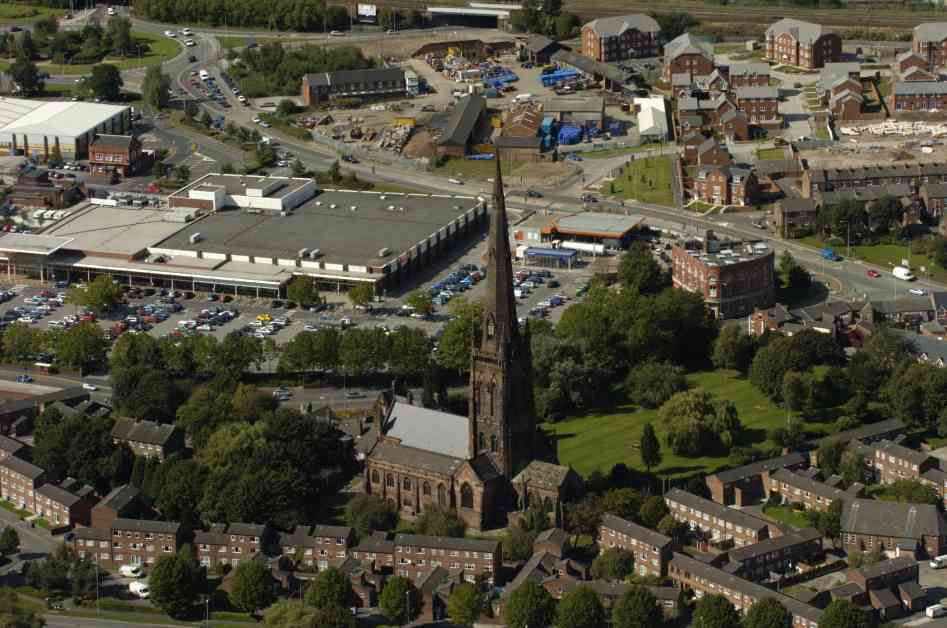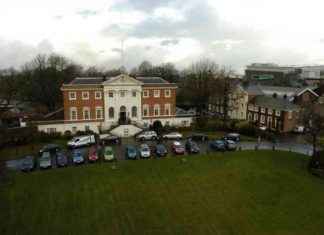Warrington Parish Church: A Landmark with Ancient Roots
Warrington Parish Church stands as a testament to the rich history and significance of this town in Cheshire, England. Its presence on the skyline of Warrington is a reminder of the centuries of worship, community gatherings, and historical events that have taken place within its walls. First mentioned in the Domesday Book in 1085, the church has a history that dates back even further, to the seventh century.
The Early Years: Origins and Growth
The origins of Warrington Parish Church can be traced back to the seventh century, when a place of worship likely existed on the site. By the early 13th century, the church stood at the heart of the medieval village of Warrington, adjacent to the castle of the Boteler family, who were lords of the manor. The parish church played a central role in local government and community life, with church festivals being important events for the townspeople.
In the 12th century, the church was built in stone, and it underwent remodeling in the 14th century as the town prospered. The church’s role expanded during this time, reflecting the growth and development of Warrington as a thriving community. It became a Royalist stronghold during the Civil War, enduring a siege attack from the Parliamentarian army in 1643. The cannonball marks visible on the exterior of the building serve as a reminder of this turbulent period in the church’s history.
Renovations and Revival
As Warrington continued to grow in the 18th century, the church underwent further renovations to accommodate the increasing population. Wooden galleries were added to the interior to provide seating for the growing congregation. However, by the mid-19th century, the church had fallen into disrepair, prompting Rev. William Quekett, the Rector of Warrington, to embark on a mission to restore the church to its former glory.
Architects Frederick and Horace Francis were enlisted to oversee the rebuilding of the church, but Rev. Quekett had a grander vision in mind. He launched an appeal for funds to add a spire to the church, which would eventually reach a height of 281 feet. This impressive spire, topped with a golden cock, became a symbol of the church’s revival and a beacon of hope for the community.
The addition of the spire solidified Warrington Parish Church’s status as a prominent landmark in the town and the surrounding area. It became the third-highest parish church spire in England at the time, a testament to the dedication and commitment of Rev. Quekett and the townspeople who supported the restoration efforts.
A Living Museum of History
Inside Warrington Parish Church, visitors can explore the rich tapestry of the town’s history through its architectural features and monuments. The effigy of Lord Winmarleigh, the great-grandson of the builder of Warrington’s town hall, is a striking presence in St. Anne’s chapel, serving as a reminder of the town’s illustrious past.
In the regimental chapel of the South Lancashire Regiment, visitors can pay homage to Sir John Boteler through his alabaster tomb. The Boteler family’s contributions to the early life of the church are commemorated in this chapel, preserving their legacy for future generations to appreciate.
As a living museum of history, Warrington Parish Church offers a glimpse into the past while also serving as a place of worship and community gathering for the present. Its walls echo with the stories of generations past, reminding visitors of the enduring legacy of faith, community, and resilience that have defined Warrington throughout the centuries.
In conclusion, Warrington Parish Church stands as a testament to the town’s rich history and significance, with roots that stretch back to the seventh century. Its presence on the skyline of Warrington is a reminder of the enduring legacy of faith, community, and resilience that have shaped the town’s identity. Through centuries of worship, historical events, and architectural evolution, the church has remained a beacon of hope and a symbol of the town’s enduring spirit.




















